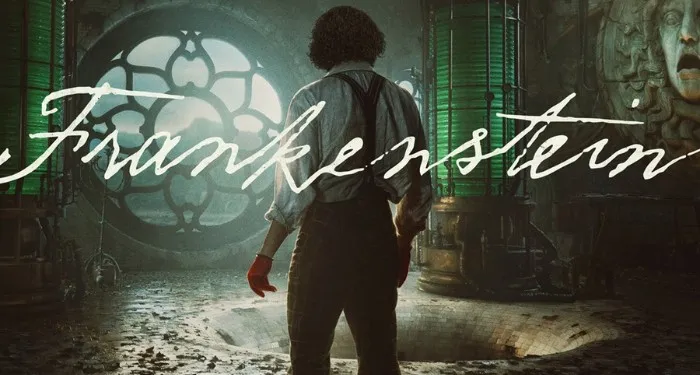Early in the afternoon of March 24, 1999, my wife, Angélica, and I were seated high up in the gallery overlooking the chamber of the House of Lords in London, where a panel of law lords (the English equivalent of a Supreme Court) was to decide whether there were grounds to extradite General Augusto Pinochet, Chile’s eighty-three-year-old former dictator, to Spain to face charges of torture, for which he was alleged to have been responsible during his seventeen years of terror from 1973 to 1990. I had been following the case obsessively and commenting on it just as obsessively in op-eds and television and radio appearances, so I was lucky to be visiting London that week and luckier still to be invited, thanks to my activism, to see his fate decided.
From the moment Pinochet, who was convalescing at the London Clinic after an operation for back surgery, had been arrested at 11:00 PM on October 16, 1998, the case had taken on global repercussions. There were two groundbreaking questions that a potential trial raised and for which no precedent existed. The first was a question of jurisdiction: Could foreign nations pass judgment on a former head of state for crimes against humanity committed not in those nations but in his own? Shouldn’t such a trial be held in the nation where the crimes had been perpetrated? The second question was: Did Pinochet’s status as a former head of state grant him immunity from prosecution anywhere in the world, especially in this instance because he was in London on a diplomatic mission to discuss an arms deal? And if he was found to lack that immunity, did this mean that despots around the world could henceforth be indicted by the judiciary of any nation they happened to visit?
The ruling of the law lords that afternoon was blunt and scathing. Only one of the seven favored absolute immunity. The other six determined that Spain and Britain had the right to put Pinochet on trial for torture and conspiracy to torture and that, given the nature of these crimes, he had no immunity. He could indeed be extradited to Spain.
This was not only a victory for many of Pinochet’s victims: those executed after his coup against President Salvador Allende in 1973, those tormented and disappeared and exiled and persecuted. It was also a victory for humanity, as I shouted, a tad dramatically, to journalists when I emerged into the bright autumn air of Westminster. From that moment on, wherever and whenever people are tortured and killed as part of a systematic and widespread governmental policy, such violations could be judged and punished anywhere in the world. This was perhaps the most significant development in international law and human rights since the Nuremberg trials.
That the precedent had been gloriously set did not mean, however, that Pinochet would end up in a docket in Spain. Many forces were at work to spare him that humiliation and send him home, and after another year of legal wrangles and pressures of all sorts, the British home secretary overruled the law lords’ decision and released him on medical grounds.
As I watched from the gallery, I could not take my eyes off those spectators who had a front-row seat on the main floor: the litigants, witnesses, interpreters, diplomats, and victims, as well as supporters of the general. These were people who knew, each in their own way and in piecemeal fashion, what had gone on behind the scenes during Pinochet’s months of detention.
Among them, I only recently discovered, was a young barrister, Philippe Sands, who had been slightly involved in the case as an adviser to Human Rights Watch, one of the plaintiffs. No one could have predicted that twenty-six years later, Sands, now established as an eminent human rights lawyer, would publish 38 Londres Street: On Impunity, Pinochet in England, and a Nazi in Patagonia, a remarkable book that reveals as never before the history of the former dictator’s detention in London—a chronicle that soon branches out into a whirlwind of other stories and events.1
As might be expected, many empathetic pages in it are devoted to those dissidents whose lives were destroyed by Pinochet’s inexorable persecution, as well as to the search for justice by the ravaged family members of the dead, a number of them desaparecidos: men and women kidnapped, tortured, and executed, then disappeared and still unburied. With so many fading, almost-forgotten voices crying out for their stories to be told, an author must inevitably choose on whom to concentrate, and Sands has been dexterous in his selections, offering special consideration to two of the victims.
One is Carmelo Soria, a UN official with dual Spanish and Chilean nationality and an active opponent of the Pinochet regime who was abducted in July 1976. His body was found in a canal in Santiago and his death made to look as if he had been killed in a car accident, though it soon became apparent that he had been tortured and executed. Over the decades the Chilean courts were unwilling to investigate the matter, which led to his widow Laura’s decision to seek justice in Spain, which became the catalyst for the long road to a warrant being issued for the arrest of Pinochet in London. But unraveling what happened to Soria also allows Sands to reveal the network of repression in Chile: the house where he was tormented and killed2 was owned by Michael Townley, an American expatriate working for DINA, the Chilean secret police, who was responsible for the murder in Argentina in September 1974 of Carlos Prats, a general who had been loyal to Allende, and his wife, Sofía, and in September 1976 of Orlando Letelier, Allende’s former interior, foreign affairs, and defense minister. (In that townhouse the biochemist Eugenio Berríos was developing sarin gas to poison the regime’s adversaries.) An additional reason for Soria’s prominence in the book is that Sands realizes, quite by chance, that Soria is a cousin of his Spanish mother-in-law (he loves coincidences), so he has a personal stake in unearthing what happened to him.
The other victim Sands spotlights is Alfonso Chanfreau, a student who was arrested in July 1974, tortured, and then spirited away in a refrigerated van, never to be seen again. These atrocities (witnessed by several other detainees, including his wife, Erika Hennings, who spent the following decades seeking knowledge about his final destination) occurred at a torture center located at 38 Londres Street in a bohemian neighborhood of Santiago, providing Sands his title—an ironic one, since it was in London that the main instigator of those crimes was put on trial.
But the overlapping names of two places linked by horror and justice are secondary to the deeper reason for focusing on what transpired in that terrible building. What makes 38 Londres Street so important (there were myriad other torture and extermination sites in Chile that claimed far more fatalities) is that it leads Sands to investigate whether a Nazi war criminal participated in the Chilean dictatorship’s system of repression. It is the relentless pursuit of this hidden and repulsive past that gives 38 Londres Street its startling originality, turning it into a tour de force that extends its reach far beyond what we typically envisage from a book about human rights.
That mass murderer is Walther Rauff.
Many Nazi functionaries involved in the extermination of the victims of the Third Reich managed to escape immediate justice after the war by emigrating to Latin America. The most notorious of them were Adolf Eichmann in Argentina and Klaus Barbie in Bolivia (both were apprehended and ultimately put on trial), but the case of Walther Rauff is unique. Sands explains that Rauff, a colonel in the SS, had overseen
the policy to use vans to gas Jews and others to their deaths, and then to kill hundreds of thousands across Europe, to make them disappear. Indicted for these acts of mass killings, Herr Rauff avoided capture and made his way…[to] Patagonia in southern Chile, the manager of a king-crab cannery.
Rauff lived there under his own name and must have felt untouchable (he was spying for West German intelligence). Alerted to his existence, a court in Hanover asked Chile to extradite him. The evidence was overwhelming: he had designed and efficiently implemented the production of hundreds of vans in which prisoners were killed with carbon monoxide—a means of execution that the SS chief Heinrich Himmler had demanded as a way of sparing German recruits the trauma of shooting them face-to-face.
The Chilean police arrested Rauff at 11:00 PM on the night of December 3, 1962 (exactly the hour when his friend Augusto Pinochet was awakened by English constables in the London Clinic thirty-six years later3). But his extradition was refused by the Chilean Supreme Court, which cited a statute of limitations. The originator of the vans of death had the right to remain in Chile.
That would have been the end of the story, were it not for Pinochet’s 1973 coup against Allende, which opened the door, it was whispered, for the unrepentant Nazi to act as an adviser to the dictatorship’s secret police and even become an interrogator. But was this true? There were many rumors but scant hard evidence, no documentation, no smoking gun.
And here Sands’s book takes on the pace of a thriller as he attempts to track down incontrovertible proof of Rauff’s involvement in Chile’s reign of terror. What makes this search so engrossing—dozens of leads and eyewitnesses are examined, traces are followed until they dry up or point to yet another potential clue, archives and photos are scoured—is that Sands, ever the lawyer, does not accept reports of Rauff’s wrongdoing without scrutinizing their factualness; he is always scrupulously fair to a man for whom he has the utmost contempt. He wants to nail Rauff but will not accuse him of crimes he did not commit.
All the more damning is what Sands does uncover. Rauff interrogated defenseless prisoners, ferreting out when they were lying, deciding from the shadows when to apply more electrical current to their genitals. He was also implicated in Colonia Dignidad, a German religious community that served as a torture and extermination camp for the Chilean secret police.4 It is probable, though not definite, that he helped design and build the concentration camp on Dawson Island in Patagonia, where Allende’s former ministers and functionaries were held for months after the coup in subhuman conditions.5 But all this pales in comparison to Rauff’s major contribution: he helped to manufacture and deploy in Chile vans similar to those he had conceived in Germany to carry out genocide.
Rauff had already, as the manager of the fishery in Punta Arenas, been responsible for innovations in the refrigerated vans used to ship tins of king crab. They were an ideal means, after the coup, of transporting Chilean dissidents from 38 Londres Street, with a stopover at times in Colonia Dignidad, to a facility on the Chilean coast where their bodies were cast into the sea tied to pieces of railway track or—in a disgusting alternative that considerable evidence hints at—ground into fishmeal.6
When I read in Sands’s initial “Note to the Reader” that the lives of Pinochet and Rauff “were deeply intertwined” and that he would take us “on a journey to uncover their connections and its consequences,” I wondered how he would pull this off. He brilliantly succeeds. By placing Rauff at the torture center of 38 Londres Street where the barely alive Alfonso Chanfreau—one of the ninety-eight victims included in the list that the Spanish judge Baltasar Garzón sent to London as part of his original warrant to arrest Pinochet—was thrown into a refrigerated van that would transport him to his death, Sands manages to link these two violators of human rights, the Chilean dictator and the Gestapo officer, in a chilling indictment of complicity and continuity between Nazism and the worst excesses of a Latin American dictatorship, a vicious echo of past repression resonating almost thirty years after Hitler’s death.7
Such a masterful work is the result of ten years of research and scores of interviews in several countries (England, Spain, Chile, Germany, the US), but its roots can be traced back to Sands’s previous three books, in which he honed the techniques that serve him so well in 38 Londres Street. He follows the narrative strategy set out in East West Street (2016), continued in The Ratline (2020), and again displayed in The Lost Colony (2022)8: a constant back-and-forth in time and space that weaves together different strands of the past, both personal and collective, with each inquiry buttressed by striking sketches of those involved and the threads skillfully fashioned into a tapestry so that each event and investigation relates to all the others. This achieves a degree of mesmerizing subtlety in 38 Londres Street, as he proves that “everything is connected.”
Such a method is not arbitrary or capricious, a mere stylistic flourish, but is embedded in how Sands sees the “impregnations” of history and how he wants his readers to experience them: not as something fixed but as shifting according to the mysteries and associations he uncovers. In East West Street, for instance, he takes Lemberg (formerly in Poland, now Lviv in present-day Ukraine) as a fulcrum through which to tell the World War II story of four separate men conjoined by that city, even if none of them ever met. Not content with focusing solely on the repellent and yet strangely alluring figure of Hans Frank, who was condemned to death at Nuremberg for his crimes as head of the General Government in the German-occupied Polish lands that included Lemberg, he traces the intricate origins of the concepts “genocide” and “crimes against humanity” through the lives of Raphael Lemkin and Hersch Lauterpacht, the two Lemberg residents who created them, independently of each other and often in blunt rivalry. To this Sands adds a personal memoir, puzzling out the secrets behind the survival of his Lemberg-born grandfather, Leon Buchholz, which allows him to unfold the beguiling story of how his mother, Ruth, as a three-year-old managed to survive the Holocaust. But the rest of the family (dozens of them) was exterminated, though Sands gives special emphasis to Ruth’s grandmother Malke, who was murdered at Treblinka, thus demonstrating how genocide and crimes against humanity affect real human beings, their bodies and frustrated dreams.9
It is in this recovery of a shadowy past from a labyrinth of traumas and obfuscations that 38 Londres Street is especially artful. So thorough and exhaustive an exploration of what occurred, in the cases of both Pinochet and Rauff, is only possible because of Sands’s admirable facility for establishing cordial relationships with everyone, large and small, involved in this chronicle, including a series of unsavory characters: former torturers and agents turned state’s witnesses and, above all, those who helped Pinochet escape the reckoning that would have set such a luminous example for Chile and the world beyond. Just as Sands was able in The Ratline to befriend the Nazi-justifying son of the war criminal Otto Wächter and others who helped him avoid being apprehended and judged, in 38 Londres Street he grows close to revolting people whose physical presence I have assiduously avoided over the years. And yet by forcing me to cohabitate, on the page at least, with those who enabled the crimes of the Chilean general and the German Obersturmbannführer, Sands afforded me the bizarre chance to reconnect with a Pinochet supporter from my own intimate past and meditate anew on the complex, perverse relationship between victims and victimizers.
I could not, of course, be a neutral reader of a book that prompted so many memories, some of them quite painful. Though I was close to neither Chanfreau nor Soria, I had met the former fleetingly at the University of Chile and the latter when we both volunteered to work at Quimantú, the state publishing house that brought out millions of inexpensive books sold at newsstands during the Allende years. Other victims and witnesses profiled or interviewed by Sands were friends, comrades, and former students I had worked with before and after the coup—and, naturally, the relatives of the missing with whom I had formed a bond. These encounters were to be expected. What I had not anticipated was finding Miguel Schweitzer Walters haunting so many pages of the book.
Schweitzer Walters was the son of Miguel Schweitzer Speisky, Pinochet’s minister of justice, who in 1963, when he was a law professor (and despite being Jewish), had been instrumental in developing the legal arguments against extraditing Rauff to Germany. Sands writes, “Professor Schweitzer Speisky’s twenty-two-year-old son, also called Miguel,” later said that as a student “he assisted his father in writing the opinion that contributed to Rauff’s freedom.” Years later Miguel Jr. negotiated with the Americans in the Letelier case on Pinochet’s behalf and then served as his ambassador to London and minister of foreign affairs before coming to his rescue as one of his most prominent lawyers and advisers when he faced extradition, like Rauff had all those years ago.
On the evening of Pinochet’s arrest, Miguel Jr., then in private practice in Santiago, “fifty-eight years old, jowly, smiling, well-groomed, a man of charm and intelligence, [and] Pinochet’s true believer,” received a phone call from London. He flew to England to stay next to his idol for most of the next seventeen months and made the acquaintance of the younger Philippe Sands. They often sat next to each other during the proceedings. (They were side by side that afternoon in March 1999 when I peered down into the House of Lords.) It was a relationship that Sands renewed diligently years later as he flushed out details of how Pinochet’s legal team and, above all, Miguel Jr., his crucial informant, were reacting to the onslaught of events that had their sinister client on the verge of being judged for his atrocities. Despite their radical differences, Schweitzer and Sands obviously enjoyed each other’s company.
I was not surprised that Sands liked Miguel. I had also succumbed to his “charm and intelligence” when I was a schoolboy at the Grange School in Santiago in the mid-1950s. He was two years older than me and had shown himself a champion of the most vulnerable children in an educational institution where bullying and humiliating anyone smaller or weaker was encouraged. I cannot say that I worshiped him, but he was undeniably a role model. If, at that age, I had been asked what sort of lawyer he would become, I would have predicted someone like Sands—a defender of those injured by merciless authorities and authoritarians.
Miguel’s persistent presence in 38 Londres Street was disturbing. During Pinochet’s detention I had debated him on television. Though we were not in the same studio (he was in London and I was in the US), we were able to speak before our confrontation, and I could not help but feel a reluctant wave of amiability at seeing him again after all this time. He was still, in some unfathomable zone inside me, the same charismatic guardian of the bullied and neglected while also very much the present-day protector of a man responsible for the murder of so many of my friends and for the resurrection of a form of fascism. Though I kept these contradictions at bay during our very civil discussion on television, I was always aware that such proximity with a former friend was troubling. I found it difficult to stifle the disappointment I felt at his betrayal of the boy he had been and the man he should have become.
But it was only many years later, when I read Sands’s book, that I realized what really bothered me. I found it intolerable that, like the vast number of civilians who facilitated so much pain during the Pinochet dictatorship, my erstwhile hero Miguel had suffered no consequences, paid no price for his support of a mass murderer. Indeed, Sands does not elicit from him the slightest regret for his actions.
Sands’s previous three books lead the reader—after a trek through a bleak landscape of cruelty—to endings with some sense of closure and even redemption. In East West Street, the concepts of genocide and crimes against humanity that were laboriously established by two Holocaust survivors become bulwarks of international law. In The Ratline, the granddaughter who had been willing to give her Nazi grandfather the benefit of the doubt declares him to be a mass murderer, leaving open the hope that new generations will not blind themselves to the transgressions of the past. In The Last Colony, the families forcibly deported from the Chagos Islands by the British with the connivance of the Americans manage, after five decades of struggle and litigation, a heartwarming return to their ancestral home.
The finale of 38 Londres Street is more ambiguous. Pinochet never stands trial and Rauff dies of natural causes. (At his funeral, Chilean and German Nazis shout “Heil Hitler!”) Nevertheless, Pinochet’s seventeen months of detention in London (one for each year of his misrule) advanced the fight against impunity, both internationally and in Chile.10 And although Rauff escaped punishment and, for decades, the truth about his crimes in Chile, he now emerges in this stunning book as a monster who used his knowledge of repression to coldly collaborate with yet another brutal regime.
Also unscathed are the civilian accomplices of that regime, such as the affable and ineffable figure of Miguel Schweitzer, whose impunity Sands particularly singles out as his book winds down. Paramount are the vans—both the ones used to exterminate Jews during World War II and those used to dispose of the desaparecidos in dictatorial Chile—which did not spring out of thin air. They needed to be designed and tested and manufactured and then put into operation. In order to retrofit hundreds of them and turn their exhaust pipes into killing machines, Rauff procured “spare parts from Gaubschat in Berlin-Neukölln.” Sands comments ironically that this company was acquired in 1975 “by Wartburgmobil, whose motto is: ‘We connect people.’”
In Chile he focuses on Pesquera Arauco, a fishery in San Antonio taken over by Pinochet’s DINA after the coup, whose vans were used to “transport prisoners and corpses across Chile, to and from San Antonio and elsewhere. Corpses one way, fish, shellfish and fish meal the other.” It is true that after Pinochet was arrested in London, “the dam broke, allowing new investigations,” several of which delved into Pesquera Arauco’s malfeasance, but most of the evidence had been burned and many crucial eyewitnesses are still afraid to speak, so that “fifty years after the Coup,” Sands observes, “not a single person had been indicted for the use of the Arauco vans or facilities.”
It is a sobering conclusion to an exceptional book, especially in today’s world of wannabe dictators, rising authoritarianism, resurgent fascist temptations, new war crimes, and mass deportations. We are reminded that the impunity of the powerful is made possible by the complicity of the many and that such complicity depends on the indifference of those who watch and do nothing to intervene, let alone protest. To put it pithily, as Sands does in his epilogue: “And on it goes.”
Even so, one lesson from 38 Londres Street abides: impunity is far from guaranteed for the transgressors. Sands could painstakingly expose Rauff’s second life as a mass murderer because of the willingness of a number of victims, witnesses, and magistrates to assist him as he pursued the truth. Nor was Pinochet’s arrest in London a mere fluke or accident but rather the result of decades of struggle against tremendous odds by countless people—among them Carmelo’s wife, Laura, and Alfonso’s wife, Erika—who swore not to forget, never to surrender. Their example gives us hope that ordinary men and women can find, at the most dire and dangerous moments in their lives, the courage and wisdom to resist injustice, so that the crimes of their day—and, alas, of ours—need not be endlessly repeated tomorrow.

















 English (US) ·
English (US) ·